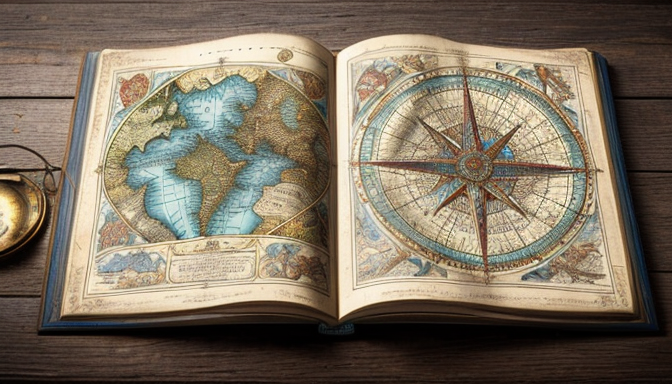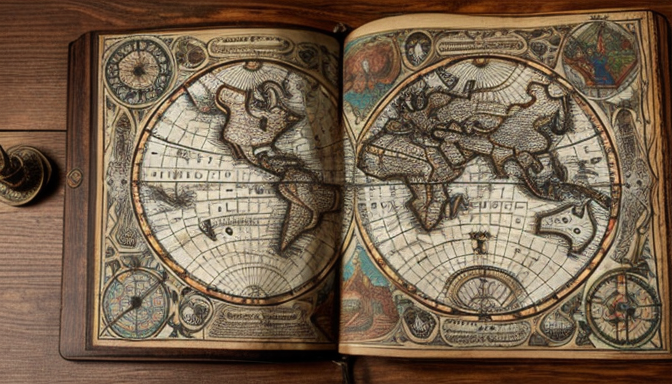Have you ever found yourself lost in a world that doesn’t exist? Imaginary cartography has a magical way of pulling us into realms where the impossible becomes possible. These maps are not just mere illustrations; they are gateways to fantastical landscapes and adventures that stir our imagination. From the mystical lands of Middle-Earth to the enchanted realms of Narnia, the allure lies in their intricate designs and the stories they tell.
Creating these maps is an art form that requires a blend of creativity and skill. Artists and writers often draw inspiration from a variety of sources—mythology, history, and even their own dreams. They meticulously craft landforms, delineate kingdom borders, and populate their worlds with unique cultures and creatures. The process of designing a fantasy map can be likened to weaving a tapestry, where each thread contributes to a larger, cohesive narrative. The creative process behind these maps is both a journey and a destination.
But what is it about these imaginary worlds that resonates so deeply with us? Perhaps it’s the emotional connection they foster. When we gaze upon a beautifully illustrated map, we are not just seeing lines and shapes; we are transported to a place where our dreams come alive. These maps evoke feelings of nostalgia and wonder, allowing us to escape the mundane aspects of reality. They remind us of the adventurers we once dreamed of being, igniting a spark of curiosity that encourages exploration, even if only in our minds.
The Creative Process Behind Imaginary Maps
Imaginary maps are not just random scribbles on a page; they are the blueprints of dreams, crafted by the imaginative minds of artists and writers. The creative process begins with a spark of inspiration, often drawn from mythology, literature, or even personal experiences. These creators dive deep into their minds, pulling together fragments of reality and fantasy to design intricate landscapes that captivate our imaginations.
One of the first steps in creating these fantastical realms is brainstorming the key elements that will define the world. This includes:
- Landforms: Mountains, rivers, and forests that shape the geography.
- Kingdom Borders: Lines that divide realms, each with its own culture and history.
- Unique Features: Enchanted lakes, ancient ruins, or mystical creatures that add depth.
Once the foundational elements are established, the artist begins sketching. This phase is where the magic happens; they let their creativity flow, often using traditional tools like pencils and ink, or digital platforms. The goal is to create a map that not only serves as a guide but also tells a story. The intricacies of a map can evoke a sense of place, beckoning explorers to venture into the unknown.
Ultimately, the beauty of imaginary cartography lies in its ability to fuse art and narrative. These maps are portals to other worlds, inviting us to explore realms that exist only in the mind. So, the next time you encounter an imaginary map, take a moment to appreciate the creative journey that brought it to life!

The Emotional Connection to Imaginary Worlds
Imaginary maps serve as portals to otherworldly realms, beckoning us to explore lands that exist only in the depths of our imagination. Have you ever found yourself lost in a beautifully illustrated map, tracing the curves of a river or the peaks of a mountain range? Each line and contour tells a story, inviting us to embark on adventures that transcend the limitations of reality. These maps are not just mere illustrations; they are emotional landscapes that resonate with our deepest desires and dreams.
As we delve into the intricate designs of fantasy maps, we discover a rich tapestry of landforms, kingdoms, and borders that evoke feelings of nostalgia and wonder. They remind us of childhood tales, where dragons roamed free and heroes embarked on epic quests. The act of imagining these worlds allows us to escape our mundane lives, offering a sanctuary where anything is possible. Think of it as a mental vacation—a chance to leave behind the stresses of everyday life and immerse ourselves in the fantastical.
Moreover, the emotional connection to these imaginary worlds can be profound. They often reflect our aspirations, fears, and the universal quest for belonging. When we explore these maps, we are not just traversing fictional territories; we are engaging with our innermost selves. This connection can be further enhanced by the stories that accompany these maps, weaving a narrative that makes the experience even more immersive. In essence, imaginary maps are a celebration of creativity, inviting us to dream, to wonder, and to connect with the magic that lies within our own imaginations.
Frequently Asked Questions
- What are imaginary maps?
Imaginary maps are creative representations of fictional worlds, often crafted by artists and writers. They can depict anything from fantastical realms to alternate histories, sparking our imagination and curiosity.
- Why do we feel emotionally connected to these maps?
These maps evoke nostalgia and wonder, allowing us to escape our everyday lives. They transport us to places filled with adventure, where we can explore the unknown and connect with our inner dreamers.
- How are imaginary maps created?
The creation process typically involves a blend of artistic skills and storytelling. Artists draw inspiration from various sources, including literature, mythology, and personal experiences, to design landscapes that resonate with viewers.
- Can anyone create an imaginary map?
Absolutely! Anyone with a passion for storytelling and creativity can craft their own imaginary map. It’s all about letting your imagination run wild and bringing your unique vision to life.
- Where can I find examples of imaginary maps?
You can discover a plethora of imaginary maps in books, video games, and online communities dedicated to fantasy art. Websites like Pinterest and DeviantArt are treasure troves for map enthusiasts!

Recent Comments